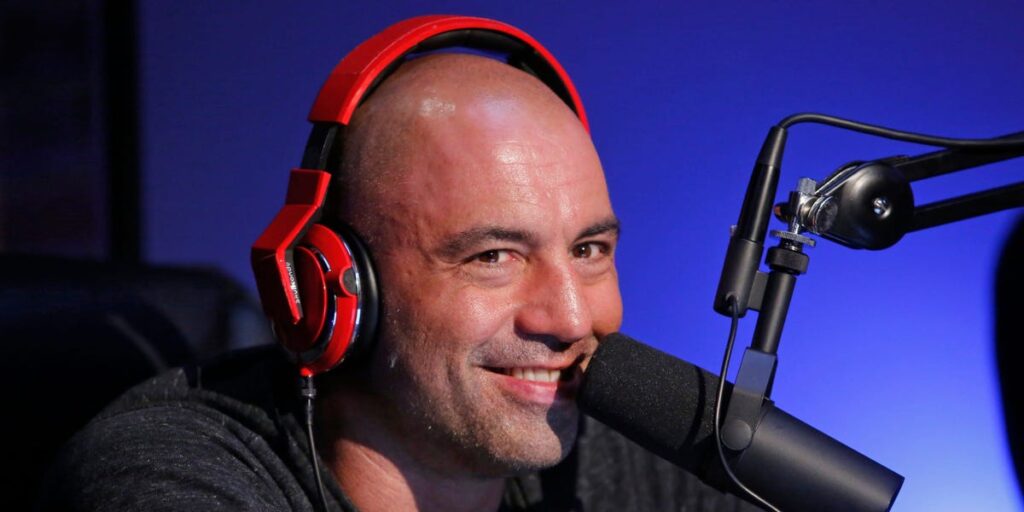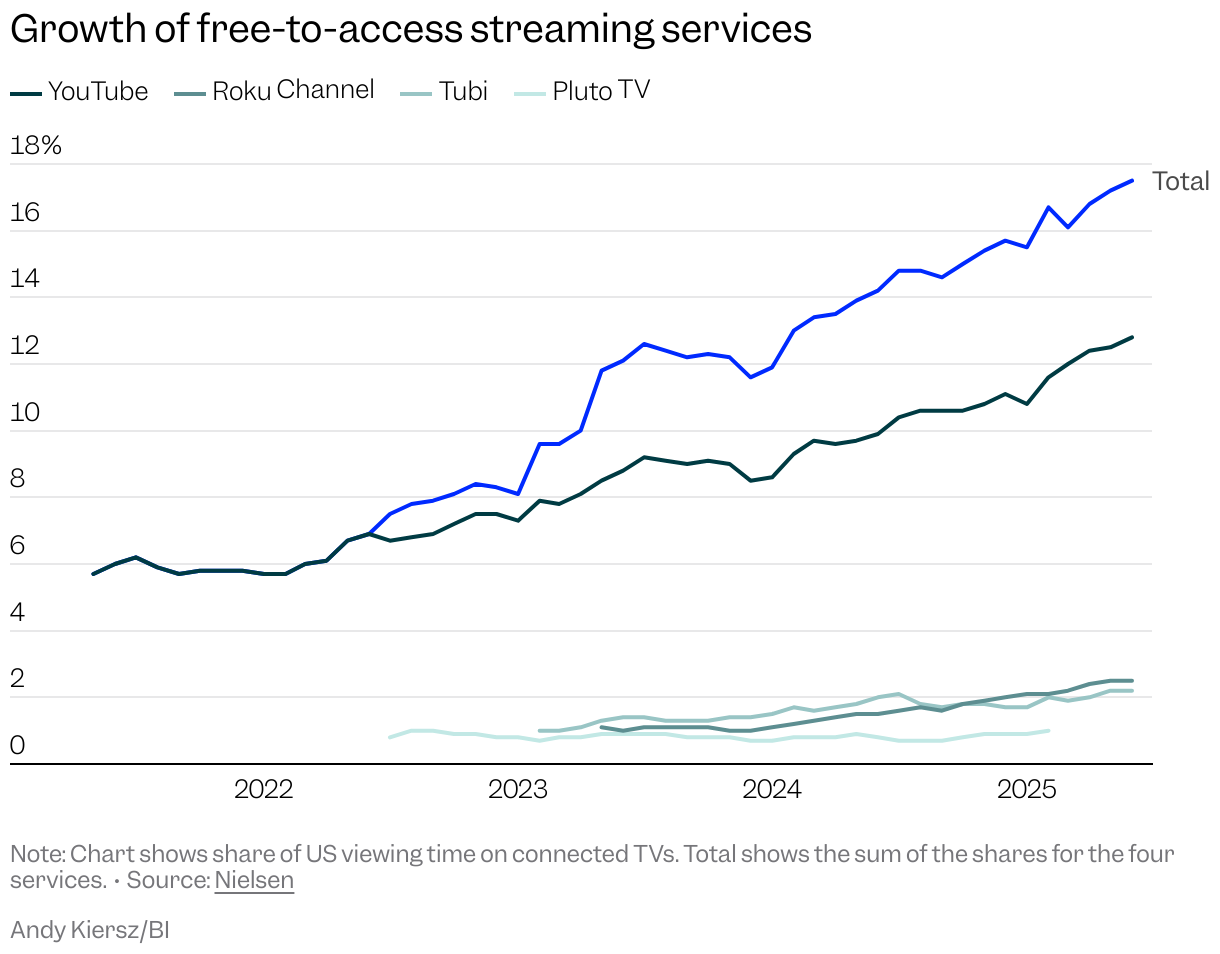Couch potatoes sick of stream-flation are increasingly tuning into free services like YouTube on their TVs.
Streaming services have gone from a cheap cable alternative to a pricier proposition in recent years, as Wall Street has pushed media companies to prioritize profit over subscriber growth.
Subscribing to the ad-free versions of eight major streaming services in the US now costs nearly $122 per month, up from about $83 in May 2021, according to an analysis by Business Insider.
Apple TV+ and the ad-free version of Disney+ have each doubled in price in that span.
Many streamers have also raised prices on their ad-supported plans. That includes Peacock, which is hiking prices by $3 across both its plans this week, as Vulture first reported.
As streaming prices rise, so has demand for free streamers.
Since Nielsen began publishing streaming ratings in May 2021, YouTube’s connected TV viewership share in the US has soared from 5.7% to a market-leading 12.8% in June. No paid streamer is close, as Netflix’s share has hovered around 8% for a year, while Disney+ and Hulu are at 4.8% combined.
Free, ad-supported streamers like Tubi and The Roku Channel have also gained. Tubi, Fox’s free streamer, put itself on the Nielsen map after its viral Super Bowl ad in February 2023 and has since more than doubled its viewership share to 2.2%. The Roku Channel is growing even faster and came in at 2.5% in June. It overtook Tubi last fall and is also above Paramount+, Peacock, and HBO Max.
These free streamers are far more popular than analyst Naveen Sarma, the media and entertainment director at S&P Global Ratings, would have expected.
Consumers “seem to be willing to put up with ads to not pay whatever pay TV or the streaming subscription costs are,” Sarma told BI.
He added that even if ads annoy young people, they may not mind streaming ads if they’re scrolling on a second screen anyway.
Free streamers aren’t cannibalizing their paid peers — yet
Free streamers began to blossom just as their paid counterparts aggressively hiked prices.
“There’s definitely a correlation,” Wells Fargo media analyst Steven Cahall told BI.
However, Cahall doesn’t see causation, noting that paid streaming’s share is more stagnant than sinking. That suggests to him that free services are mainly luring audiences from cable.
Melissa Otto of S&P Global Visible Alpha said that while consumers may be looking to pay less, she doesn’t see “YouTube’s free service taking share from paid services.”
That said, media companies trying to scale their subscription businesses should be wary of free streamers.
Streaming’s viewership share surpassed that of broadcast and cable combined for the first time ever in May, according to Nielsen. If audiences fleeing traditional TV are turning to free streamers instead of paying up, it might not be long before paid streamers stop growing.
“This is a problem for the streamers because subscriber growth in the US is slowing,” UBS media analyst John Hodulik told BI.
Paid streaming growth in the US has cooled while cancellations have risen, which has led to narrower net subscriber additions, according to subscription data firm Antenna.
“Consumers are certainly signing up for less streaming services, and they’re more willing to churn on and off of these streaming services as the content that they want to watch, the season, ends,” Sarma said.
In turn, streamers hiked prices and hoped to spark growth with password-sharing crackdowns.
Cahall said some streamers have also cut back on content spending, which means that subscribers are getting a worse deal.
This less-for-more approach may not be sustainable, Sarma said. He said streamers are hitting a wall with price hikes in light of economic uncertainty and the advent of low-cost alternatives.
Streamers should know this cycle well. Streaming services took off a decade ago as pay TV stagnated. Cable companies began to charge each customer more, which led to cancellations, which led to further price hikes that exacerbated the declines — and the vicious cycle continued.
Now, streaming has surpassed traditional TV and is the incumbent, and free streamers are the cheap challenger. What goes around, comes around.
Read the full article here



